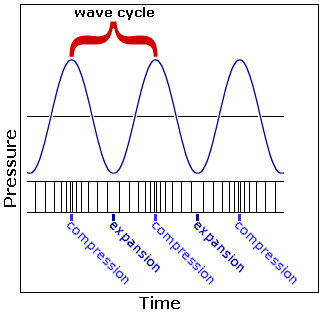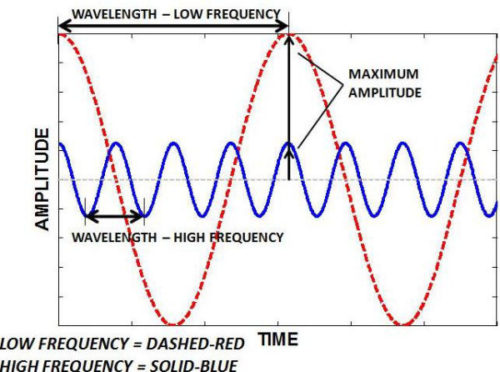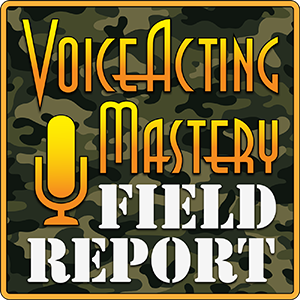VAM 115 | The Computer Skills and Audio Knowledge You Need to Be a Voice Actor, Part 2
Welcome to episode 115 of the Voice Acting Mastery podcast with yours truly, Crispin Freeman!
As always, you can listen to the podcast using the player above, or download the mp3 using the link at the bottom of this blog post. The podcast is also available via the iTunes Store online. Just follow this link to view the podcast in iTunes:
http://www.voiceactingmastery.com/podcast
In the last episode, I outlined the basic computer skills you need in order to be able to record professional quality audio in your home studio. I spoke in depth about the structure of your computer and how it interfaces with any external audio devices you may be using such as a USB microphone or a USB audio interface. If you haven’t listened to the previous episode yet, I highly recommend that you review it before continuing. As I move forward, I’m going to be building on the information I shared with you last time.
In this episode I want to talk in depth about the process of recording audio on a professional level. Most beginning voice actors do not have a solid understanding of what it means to record professional level audio. With the proliferation of smart phones and other consumer level portable digital recording devices, we’ve all become very accustomed to recording both audio and video on the spur of the moment. We often watch videos and listen to audio that our friends and family post on social media websites. While these shared moments of audio and video may be spontaneous and candid, they almost never approach a level of quality that is acceptable for professional audio environments. Just imagine if the sound in the next big movie or TV show you decided to watch was recorded on your cell phone. It would be difficult for you to listen to it for long without being frustrated by the low quality of the audio. It takes studio professionals countless hours of focused attention and hard work to achieve the crystal-clear dialogue, sound effects and music you hear in your favorite Hollywood films and television series. If your goal is to be a professional voice actor who regularly collaborates with these industry professionals, you need to know how to achieve a more rarified level of audio quality in your own recordings.
I’m going to explain to you the basics of digital recording and what it takes to record audio on a professional level from your home studio. While a complete course on how to record studio-grade audio is beyond the scope of this podcast, I do want to provide my listeners with straightforward metaphors for understanding the process. I also want to address some common mistakes and misconceptions beginners often stumble over when approaching digital recording. I’ll explain in detail what’s going on inside your audio equipment so you’ll be better prepared for the next episode, where I’ll share best practices and more mistakes to avoid when recording yourself. While some of this might seem complicated at first, I’m going to do my best to simplify things. I want you to have a solid understanding so you can spend more time focusing on your voice acting performances and less time stressing about technical issues, while still producing professional quality audio. As I mentioned in the last episode, it may be good for you to have a notebook nearby to write down some of the terms and ideas I’ll be discussing. Let’s get started!
As always, you can check out the Toolbox section of this website for my recording software and hardware recommendations.
In the beginning of this episode, I promised to include diagrams here on the website to help show how sound actually works. When you hear something, your ears are responding to sound waves that are moving through the air. These sound waves compress and stretch the molecules in the air around you, creating vibrations that your ear drums can detect. The faster the compression and stretching of air that occurs, the higher the perceived pitch of the sound. The slower, the lower the pitch. You can see that compression and stretching in the diagram below.

This compression rate is also called the frequency of the sound, since the pitch of a sound is determined by how frequently the sound waves strike your ear drum within a certain time period. The volume of a sound depends on the size of those waves, which is also called their amplitude. The higher the amplitude of a sound wave, the louder you perceive it to be and vice versa. So a quiet, high pitched sound has a low amplitude and a high frequency, while a loud, low pitched sound has a high amplitude and a low frequency. You can see this in the diagram below. The solid blue line is the quiet, high pitched sound wave and the dashed red line is the loud, low pitched sound.

Download Voice Acting Mastery Episode #115 Here (MP3)
VAMFR 010 | Marketing and Self-Promotion for Voice Actors, Part 2

VAMFR 010 | Marketing and Self-Promotion for Voice Actors, Part 2
Welcome to episode 10 of the Voice Acting Mastery: Field Report podcast!
In this episode our correspondent, DanWill McCann, shares with us the second part of his special report on how to market and promote yourself as a voice actor!
In the previous episode, DanWill began his discussion on marketing and self-promotion by looking at voice acting first and foremost as a business. While becoming a successful voice actor is a personal passion for many, it is always important to remember that your acting abilities and your vocal skills are the products you’re marketing to potential employers. DanWill discussed what marketing tools are most helpful in today’s market including business cards, demos and good old-fashioned face-to-face networking. In addition, he talked with some established professional voice actors about how they applied those techniques to market themselves.
In this episode, DanWill will be exploring how to use social media as a tool for self-promotion in the voice over industry. One thing DanWill’s noticed is that the more he develops his relationships with fellow voice actors, the broader his professional network becomes. This may be due to the fact that the voice acting community is, for the most part, made up of very friendly and congenial people. It’s easy to feel right at home with such generous peers. However, while it’s always good to develop friendships with your professional colleagues, it is also important to know when to adopt a more business-like attitude so that you don’t come off as being too intimate or familiar. This can be quite a challenge when you’re interacting over social media. Some sites have different cultures and traditions that you have to learn how to navigate in order to strike the right balance when communicating with industry professionals. What complicates the situation even further is the fact that social media platforms are constantly changing and expanding. It seems like there are new ones being created almost every month! DanWill has found it challenging to know the best ways to interact with voice over professionals online. So he went out and asked some well-known voice actors how they manage their own social media presence and marketing efforts.
Once again DanWill will be sharing advice from the same five talented and established performers who were kind enough to chat with him in the last episode. He met them at a Los Angeles area convention called WonderCon, and they were gracious enough to share their insights and experience. We’ll be hearing from David Sobolov, who specializes in deep voiced villains like Grodd in the TV show The Flash. We’ll also talk with the talented husband and wife team of Lex Lang and Sandy Fox. You may know Sandy from her bubbly performances in Sailor Moon Crystal and Lex may sound familiar to you as the voice of Dr. Doom from the Marvel Heroes video game. Dino Andrade will join us as well, a voice actor who has played numerous characters in the World of Warcraft video game franchise. Also speaking with us will be Rikki Simons, the voice of Gir in the animated series Invader Zim. DanWill found it very interesting to address the same topics with several different actors and see how each one of them had a different approach to social media. DanWill really appreciated their insights and he can’t wait to share with you what he learned, so let’s get started!
The VAM Field Report will be released on the 1st Wednesday of every month so stay on the look out for it!
Download VAM Field Report Episode #10 Here (MP3)
